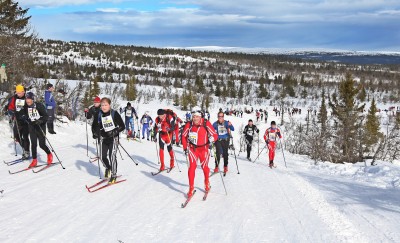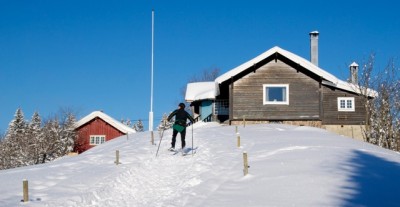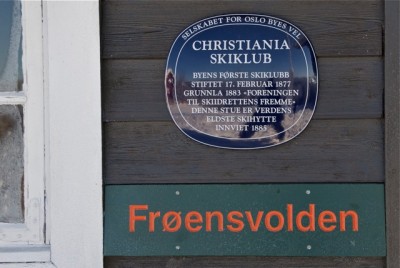As thousands of skiers take part in the annual Birkebeiner ski race over the mountains of eastern Norway this weekend, thousands of others will glide over quieter trails elsewhere around the country. They’re all participating in a sport that was nurtured in a calculated, even political, effort to build up Norway’s national identity, and the nation itself.

The famed Birkebeiner race, over a 54-kilometer (32-mile) course from Rena to Lillehammer, attracted around 16,000 participants this year, and registration filled up in less than 20 minutes. It’s billed as one of the oldest and most challenging ski races in the world, has become known in recent years as an endurance or ego contest of sorts for middle-aged men, and has spawned other races over the course on foot and cycle.
But it’s the skiing that’s at the heart of it all, appealing to those who feel skiing is indeed a part of their national heritage. They’ve grown up with the saying that Norwegians are born with skis. But were they really, when skiing suddenly emerged as a national sport back in the late 1800s? No, reported D2, the weekend magazine for newspaper Dagens Næringsliv (DN).
In a lengthy article timed to run just before Norway launched into hosting the recent Nordic skiing world championships in Oslo, D2 examined how skiing was carefully and cleverly used to boost national pride at a time when nationalism was rising to fever pitch, and agitation was growing to break out of the country’s forced union with Sweden. Back then, skiing was otherwise simply a mode of transport for relatively poor rural folks.

But then some men from the capital’s upper classes seized on skiing as a means of building up a national identity separate from Sweden’s. It was important “to get the Norwegian people out skiing,” historian Karin Berg, who leads the Ski Museum at Holmenkollen, told D2.
Wealthy and influential men with names like Huitfeldt, Schiøtt and Platou discovered the skiing styles of Telemark, reported D2, and brought young rural men like Sondre Norheim to Oslo (then named Christiania) to show off their style to city residents. The influential men formed, in 1877, an exclusive club, Christiania Skiklub, now one of the oldest ski clubs in the world, with the express purpose of promoting skiing as a national sport.

The club was formed as a private organization, with the number of members limited to just 50 and recruited from the city’s top ranks of business owners, academics, government officials and military officers. Among them were such locally famous names as Thomas Heftye and Otto Sverdrup. Even famed polar explorer Fridtjof Nansen had to tolerate a waiting list to become a member.
The club started arranging ski races and exhibitions, some attracting as many as 10,000 spectators keen on watching the “ski acrobats” from Telemark and elsewhere. Sweden’s King Oscar II, perhaps ironically, was among them and club members took part, too, but D2 reported they were better at organizing events and public relations, all part of the concerted effort to create a skiing culture in Norway.
It worked. By 1882 the club couldn’t manage all its assignments and that in turn led to creation of the large ski association now known as Skiforeningen, which is open to the public and, most recently, among those arranging the world championships. Its main purpose, though, continues to be the promotion of skiing as a national sport. Its original board all came from the legendary Christiania Skiklub and it functioned as “the mouthpiece for planting a love of the outdoors and skiing into modern life,” according to Berg.
The club’s timber cabin still exists on a hilltop in the forest just north of Oslo called Nordmarka, not far from Holmenkollen and Frognerseteren. Its members today remain enthusiastic about skiing and keeping club traditions alive. Not all of them take part in the Birkebeiner race, though, with many likely preferring the relative quiet of Nordmarka to the crowds racing into Lillehammer.
Several Birkebeiner veterans, meanwhile, have dropped the race in favour of non-competitive treks through marka. Professor Olaf Aagedal told DN on Friday that the fervor attached to Birkebeiner and the recent world championships is equivalent to a religious phenomenon. At the very least, they unleash strong feelings and commitment.
Aagedal likened Birkebeiner to a giant 17th of May parade over the mountains, with its nurturing of snow, ski and fellowship. He wasn’t participating in Birkebeiner himself. “If I go skiing in an organized event, it’s the Skarverennet from Finse to Geilo, with no one taking the time, and as a means of marking the end of the ski season,” he told DN.
Views and News from Norway/Nina Berglund
Click on our Readers Respond feature if you’d like to comment on this story.

